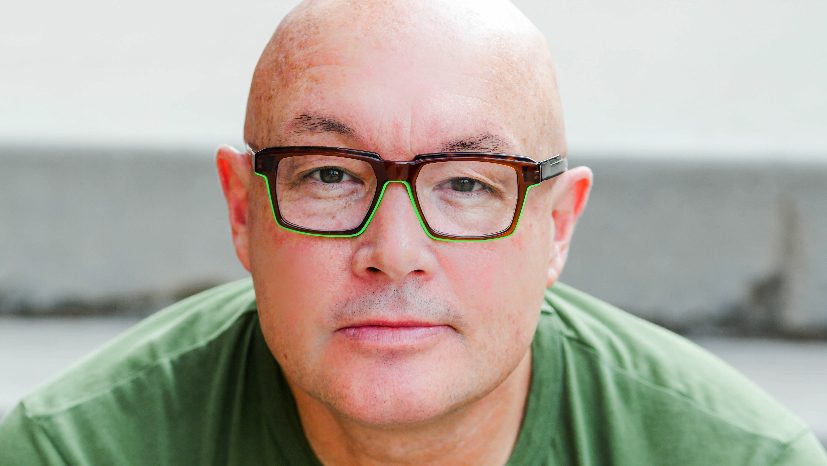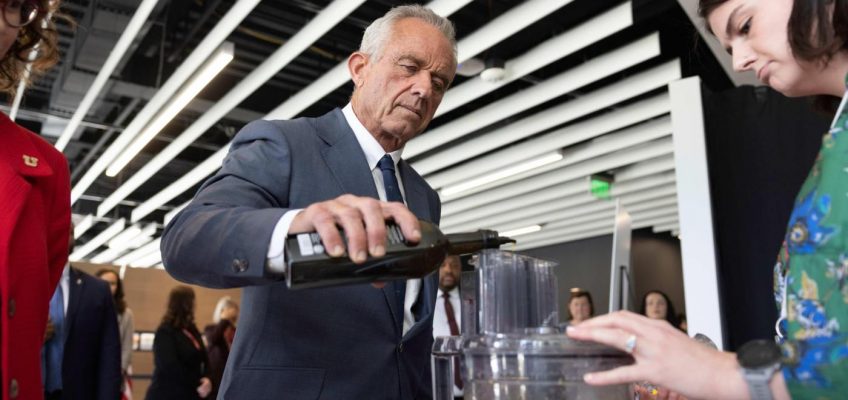A man is suspected of being under the influence of alcohol and speeding on Interstate 94 in Hudson before he went onto the shoulder and then crashed into David Burley, co-founder of Blue Plate Restaurant Company, according to a criminal charge filed Monday.
Burley, who was riding a motorcycle and wearing a full-face helmet, died at the hospital in St. Paul on Sunday. He was 58.
David Burley died when his motorcycle was struck by a car near Hudson on Sunday afternoon. (Courtesy of Fluence Media)
The St. Croix County District Attorney’s Office charged Andre Lamont Mathews, 33, of Brooklyn Park, with homicide by intoxicated use of a vehicle.
“Preliminary investigation indicates the car was in the right lane and attempted to overtake traffic by using the right shoulder when it struck a guardrail causing it to veer back into the right lane where it collided with a motorcycle,” the Wisconsin State Patrol said in a statement Sunday. Both Mathews’ car and Burley’s motorcycle “traveled across the roadway” and struck the median concrete barrier, the statement continued.
A Hudson police officer told a Wisconsin trooper he could “smell an odor of an intoxicant emitting from” Mathews, and a trooper at Regions Hospital reported the same thing, according to the criminal complaint. Lakeview Emergency Medical Services took Mathews to Regions Hospital.
Burley had also been brought to Regions, where he died. A trooper saw that his helmet had damage to the front and right rear.
“This breaks my heart so much,” Brian Ingram, Twin Cities chef and restaurant owner posted on social media Monday. “Such a good man taken by someone making bad decisions.”
‘Weaving in and out of traffic’
Two people reported seeing Mathews’ vehicle, a 2011 Infiniti G25, “operating at a high rate of speed and weaving in and out of traffic for several miles prior to the crash,” the complaint said.
The crash happened at 2:48 p.m. Sunday on westbound I-94 at milepost 1, according to the Wisconsin State Patrol.
A trooper met with Mathews in a trauma room at the hospital. He “appeared to be disoriented and lethargic,” was not answering questions “appropriately and stated he did not know where he was or if he was driving,” the complaint said.
Andre Lamont Mathews in an August 2018 booking photo. (Courtesy of the Hennepin County Sheriff’s Office)
Mathews would not submit to an evidentiary test of his blood, and law enforcement applied for and received a search warrant to draw his blood for testing. It could take four to six weeks for a toxicology report to come back, according to the State Patrol.
The St. Croix County District Attorney’s Office is seeking a longer sentence for Mathews, if he’s convicted, due to a past offense. He was sentenced for possession of cocaine in Hennepin County in 2018.
Mathews remained hospitalized as of Monday afternoon; he was listed in fair condition. An arrest warrant was issued for Mathews along with the complaint. An attorney for him wasn’t listed in the court file.
When a Minneapolis officer pulled over Mathews in November 2017, he saw what appeared to be a bottle of Brandy or a similar liquor bottle on the front passenger seat floorboard.
Related Articles
Idaho mom who killed 2 of her kids goes on trial over death of her husband
Here’s how to prevent, fight back against sextortion
Increasingly dangerous scam targets kids through sextortion
Little Canada man pleads guilty to strangling sex worker in Eagan hotel room
St. Paul resident federally indicted in MS-13 gang-related murder in Florida
Police found a handgun under a rear seat of Mathews’ vehicle, which had been reported stolen, according to the criminal complaint in that case. He was prohibited from possessing firearms because he had an armed robbery conviction from July 2009 in Kankakee County, Illinois.
An officer bringing Mathews to jail in 2017 heard him grinding his shoes against the floor of the squad, and found Mathews had a white powdery substance all over his hands and clothes; it was also on the floor of the squad and seat where Mathews was sitting. There were several pieces of suspected crack cocaine, which later tested positive for cocaine, the complaint said.




